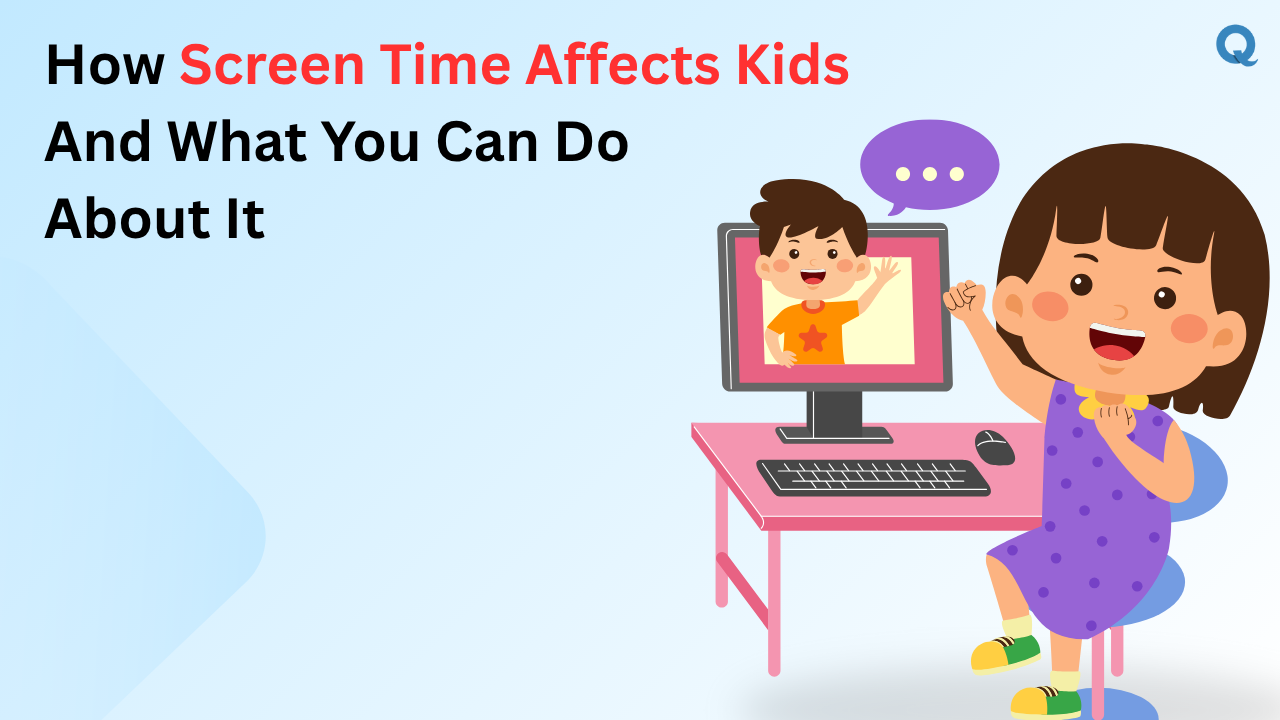How Screen Time Affects Kids – And What You Can Do About It

Strong 8k brings an ultra-HD IPTV experience to your living room and your pocket.
Screens are everywhere—TVs, tablets, phones, and computers. Kids love them, and they can be fun and useful. But too much screen time can cause problems. As a parent, it’s important to find a healthy balance. This article will help you understand the effects of screen time and how to manage it better.
In today’s world, screens have become a part of daily life. Whether it is watching cartoons, playing video games, or using apps for schoolwork, children are spending more time on screens than ever before. While technology can be helpful, overuse can lead to several issues that affect a child’s health, behaviour, and social skills. The good news? You have the power to guide them toward better habits. Let us explore how screen time affects kids and what you can do to help them find a balance.
The Hidden Dangers of Too Much Screen Time
Too much screen time can affect kids in many ways. Here are some common problems:
• Sleep Problems — Using screens before bedtime can make it difficult for kids to go to sleep. The blue light emitted by screens confuses the brain into believing it is still daytime, and it can delay the onset of melatonin, the hormone responsible for sleep. Lack of sleep can leave children tired, irritable and unable to focus at school.
• Less Physical Activity – Kids who spend too much time on screens often miss out on outdoor play and exercise. Instead of running, jumping, and playing, they may sit for long hours, which can contribute to weight gain and poor physical health. Regular exercise is essential for building strong bones, muscles, and overall well-being.
• Mood Changes – Research has found excessive screen time can result in frustration, anxiety and depression. Kids who spend more hours looking at screens might struggle to manage their emotions. If you try to limit device time, they may become moody and throw tantrums.
• Shorter Attention Span – Fast-moving videos and games can make it harder for kids to focus on slower-paced activities like reading or schoolwork. Constant exposure to quick entertainment can make traditional learning feel boring, leading to difficulty paying attention in class and completing assignments.
• Social Struggles – Spending too much time on screens can affect how children interact with others. They may prefer virtual interactions over face-to-face conversations, making it harder for them to develop strong social skills. This can lead to difficulties in making friends, understanding emotions, and cooperating with others.
The Bright Side of Screen Time (When Used Right!)
Not all screen time is bad! When used correctly, screens can be helpful:
• Learning Apps – Educational games/apps can develop reading, math and problem-solving. Numerous apps exist that teach new topics, ensuring that education is fun and interactive.
• Creative Fun – Drawing apps, music programs and video-making tools can help boost creativity. Kids can express their creative side by animating a design, writing a new song or editing a video. This kind of screen time promotes inventiveness instead of passive consumption.
• Staying Connected Video chatting allows children to communicate with family and friends, particularly those who live a great distance away. Tech enables children to stay connected, share experiences and remain socially active.
• Problem-Solving Skills – Some games enable children to critically think, solve puzzles, and create strategies. Such skills can enhance memory, logic and decision-making skills.
How to Take Back Control of Screen Time
Want to create a healthier screen time balance? Try these tips:
• Establish time limits — Determine how much screen time is allowed each day. Experts suggest no more than an hour per day for younger children and about two hours for older kids. Make it a rule: keep track of screen time with a timer or an app.
• Screen-Free Zones – Establish areas of your home where no screens are permitted, such as the dining table and the bedrooms. This promotes family bonding and enhances sleep quality.
• Encourage Other Activities – Spending time outside, reading books and doing crafts can be great alternatives to screen time. Ask the kids to try their hand at new hobbies painting, sports, puzzles, storytelling, etc.
• Watch and Play Together – Rather than letting children use screens in isolation, share their experience! Watch educational videos, play games together, and discuss what they see and learn. It helps strengthen the bonding while directing them to positive content.
• Lead by Example – Kids mimic what they see. If you limit your own screen time and engage in offline activities, they are more likely to follow your lead.
The Stress-Free Solution for Parents
Managing screen time can be hard, but what if you had a secret weapon? Qoli.ai is the ultimate game-changer for parents, helping you take back control with smart limits, real-time tracking, and stress-free management. No more arguments—just a healthier screen routine for your kids!
Conclusion – A Smarter Way to Handle Screen Time
Screens are not the enemy — the way we apply them is. Technology is a reality of today’s world, but it can be a powerful tool for both education and entertainment if used appropriately. The important part is finding the balance that works for your family.
With minor adjustments, you can establish a balanced routine that encourages positive screen behaviors. Encourage outdoor play, social interaction, and creative play, while setting firm limits with digital use.
Start today and help your child develop a healthy relationship with screens—one that benefits their mind, body, and overall well-being!
Note: IndiBlogHub features both user-submitted and editorial content. We do not verify third-party contributions. Read our Disclaimer and Privacy Policyfor details.







